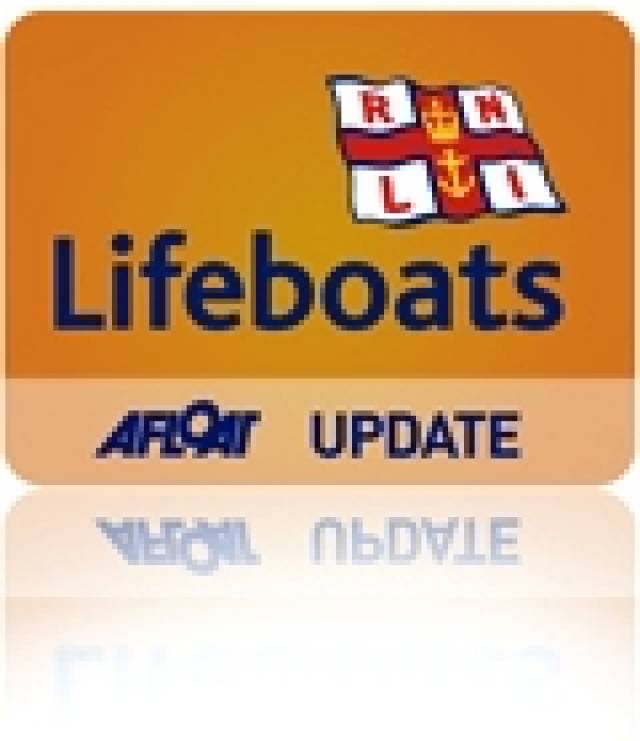#RNLI - Lough Derg RNLI launched twice yesterday (21 April) on consecutive callouts to a vessel grounded at the Corrakeen Islands and a sinking cruiser at the northern end of the lake.
Around 3.45pm yesterday, Valentia Coast Guard requested the launch of the Lough Derg RNLI lifeboat to assist three people on board their 20ft cruiser after their engine failed and were pushed on to rocks by the Corrakeen Islands in Dromineer Bay.
Helm Eleanor Hooker with Ger Egan and Tom Dunne set out in winds blowing south westerly, force 3 and gusting 5, and the lifeboat was alongside within half an hour of launch.
The two adults and a young child on board were unharmed but extremely anxious. They had dropped anchor to prevent further grounding and breakage.
An RNLI crew member was transferred to their boat to assess for damage and, very quickly - once it was established that the vessel was not holed - set up for a tow, weighed anchor and the lifeboat took them off the rocks and out into safe water.
The lifeboat then towed the boat with her crew (and the RNLI volunteer still on board) to Dromineer Harbour, where RNLI shore crew were waiting to take lines and help.
Lough Derg RNLI crew member Ger Egan advised that said anyone taking their boat afloat after the long winter should "make sure that their engines are fully serviced and make sure to use new fresh fuel".
Later that afternoon the lifeboat launched again to assist two people who had taken to their liferaft as their cruiser was sinking.
The exact location of the 28f cruiser was not certain, but once the lifeboat crew were informed that the cruiser had set out from Terryglass at the northern end of the lake, an half hour earlier they were able to accurately estimate the liferaft’s current location.
At 5.50pm the lifeboat launched with helm Eleanor Hooker, Peter Clake and David Moore on board. Winds were south westerly, force 4, gusting 6.
The lifeboat located the cruiser and the liferaft north of Coolbawn, south of Gortmore, on the eastern shore of Lough Derg, and was alongside by 6.15pm, The two people on board were unharmed, but the skipper was greatly distressed.
He had inadvertently veered off course and had glanced off a rock and holed his boat. A passing 18ft speedboat with two people on board also came alongside and gave assistance.
Two lifeboat crew members helped the people from the liferaft and onto the speedboat, which had a canopy and offered shelter from the wind. They gathered the liferaft and its contents into the cruiser cabin and, as the cruiser was rapidly taking water, they weighed anchor so that the lifeboat could beach the vessel and reduce risk of further damage.
Once beached, the lifeboat crew dropped anchor once more, and especially as the winds were forecast to get up in the night. There was no evidence of fuel leakage and arrangements were made for the vessel to assessed and recovered this morning.
The lifeboat and the speedboat, with the two casualties on board and under cover, then made way to Garrykennedy where friends were waiting to look after them.
Eleanor Hooker thanked Cillian Boyle, the helm of the speedboat, for his kind assistance and commended her crew for their "kind consideration of the casualties and their calm professionalism in dealing with the fraught situation".
































































